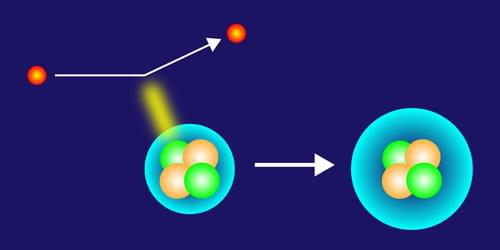A new electron-scattering experiment challenges our understanding of the first excited state of the helium nucleus.
A helium nucleus, also known as an particle, consists of two protons and two neutrons and is one of the most extensively studied atomic nuclei. Given the small number of constituents, the particle can be accurately described by first principles calculations. And yet, the excited states of the particle remain a bit of a mystery, as evidenced by a disagreement surrounding the excitation from the ground state 01+ to the first excited state 02+ [1]. Theoretical predictions for this transition do not match measurements, but the experimental uncertainties have been too large for implications to be drawn. Now, the A1 Collaboration at Mainz Microtron (MAMI) in Germany has remeasured this transition via inelastic electron scattering [2]. The new data significantly improves the precision compared to previous measurements and confirms the initial discrepancy.









Comments are closed.